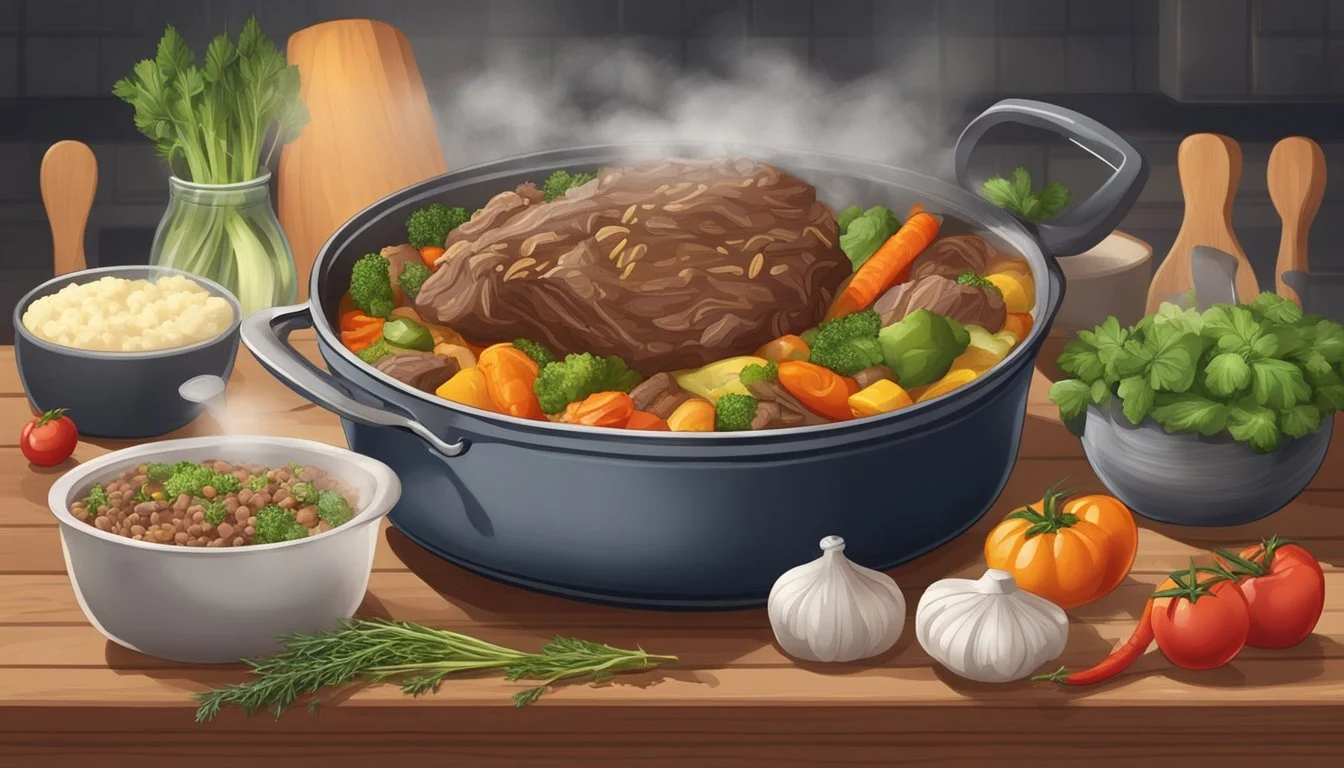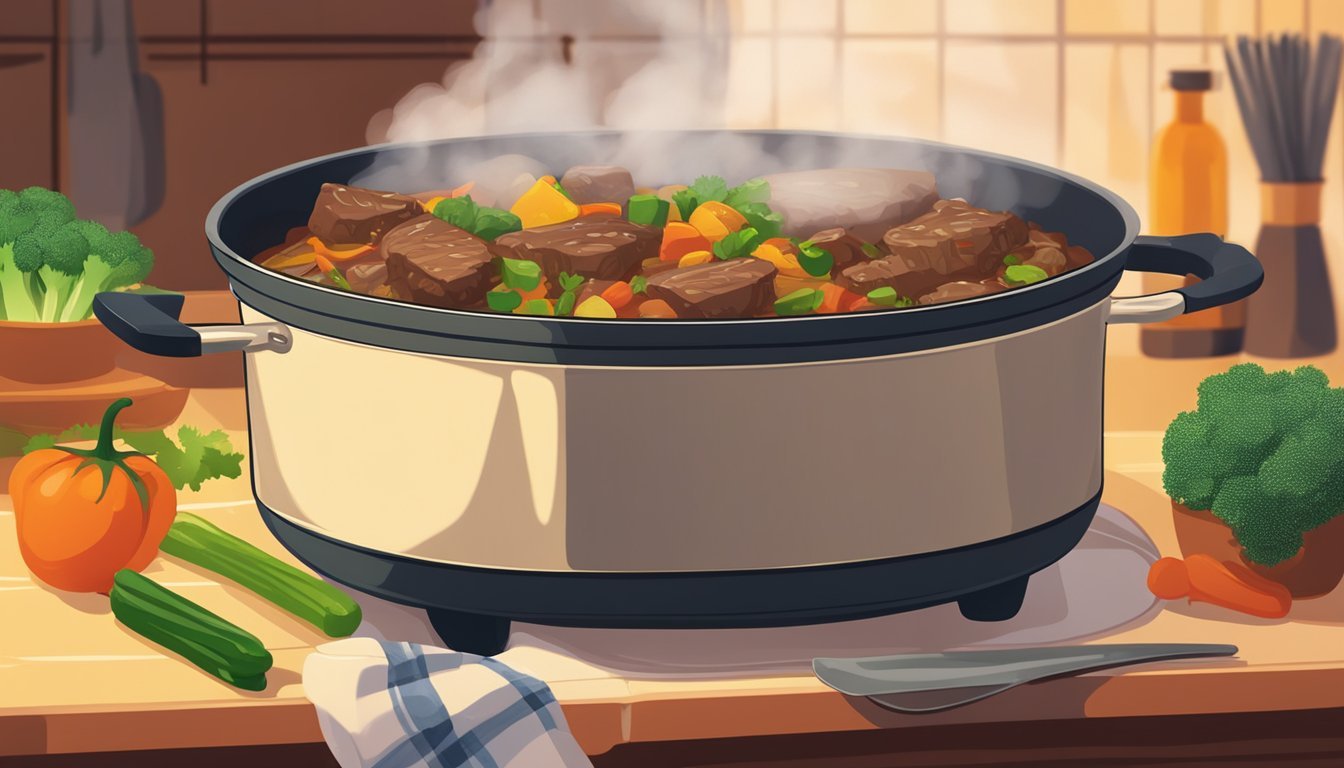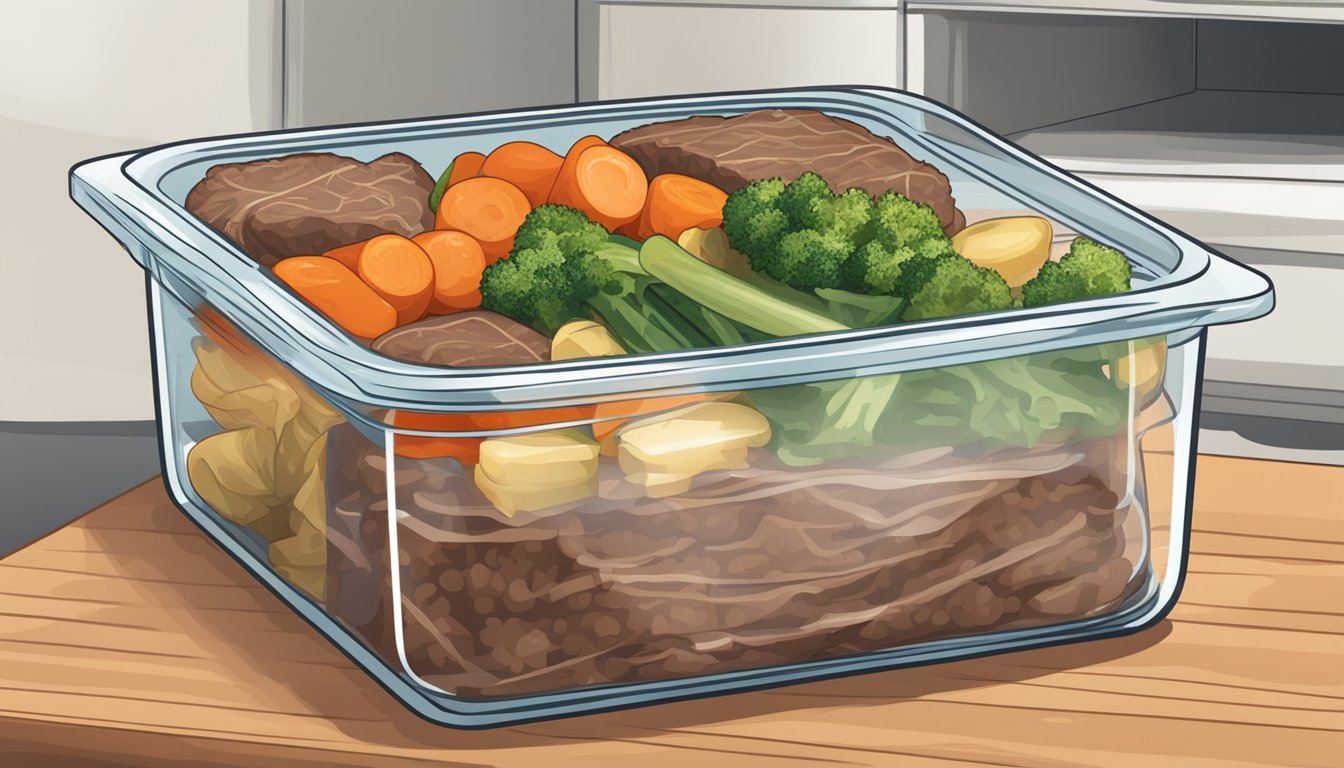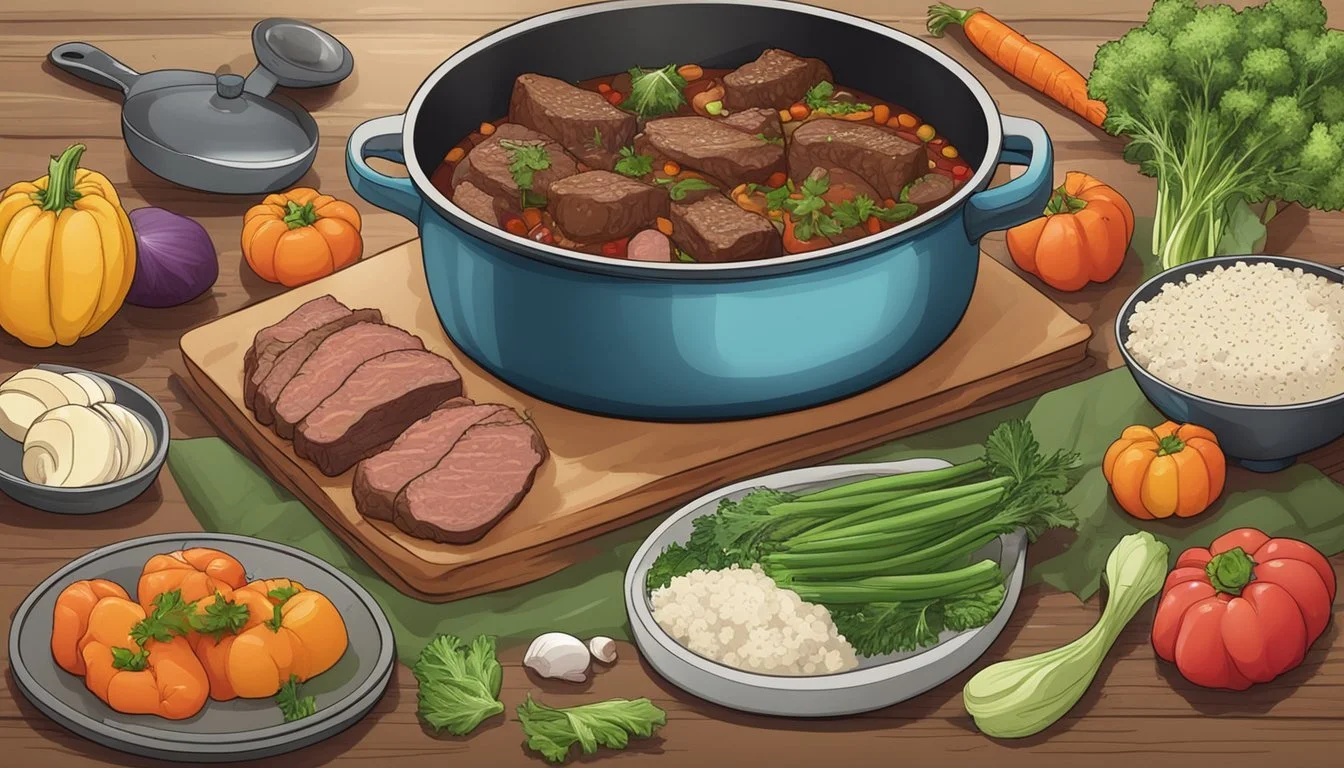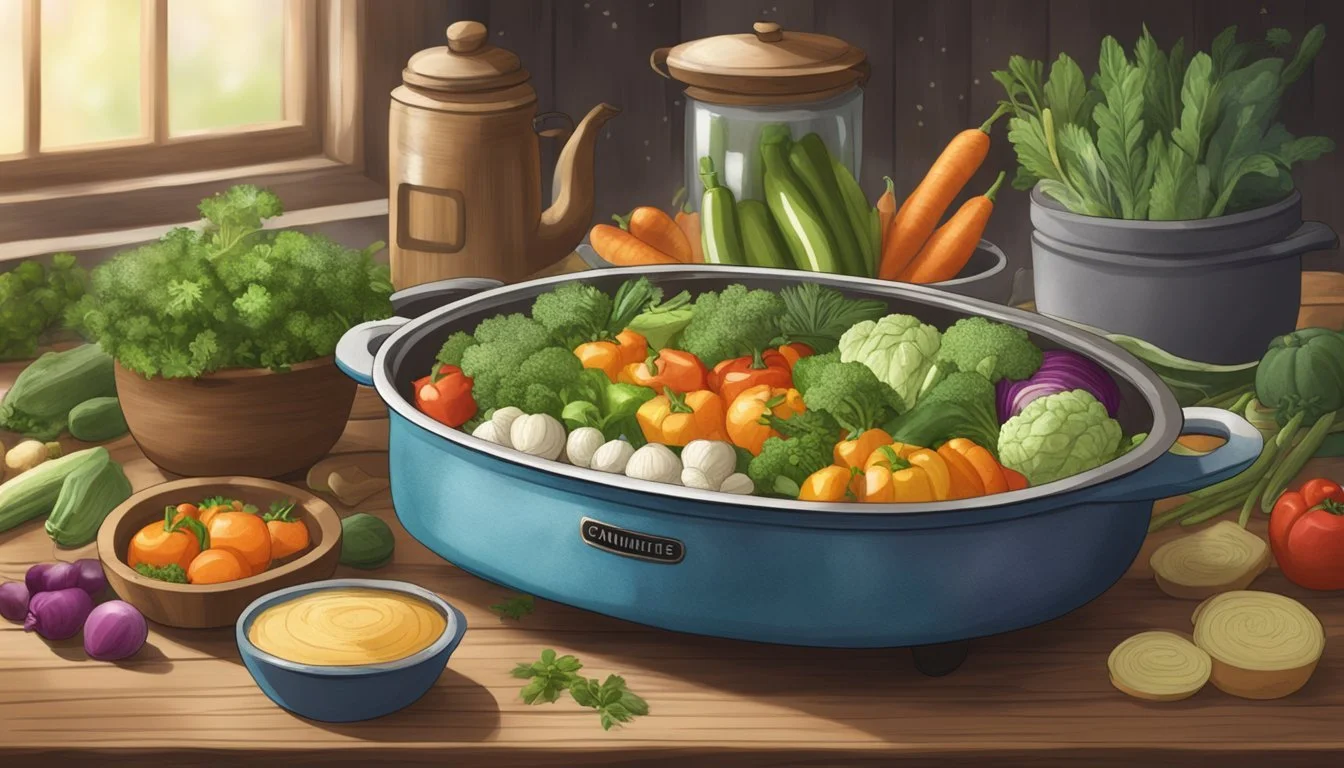How Long Does Beef and Vegetable Casserole Last?
Storage and Shelf Life
A beef and vegetable casserole is a popular comfort food that's both hearty and versatile. It's perfect for family dinners or large gatherings, providing a satisfying and nutritious meal. Typically, a beef and vegetable casserole, when properly stored in the refrigerator, can last between 3 to 4 days.
Cooking larger portions means there are often leftovers, making meal prep simpler for the days ahead. To maximize freshness, it’s important to cool the casserole down and transfer it to airtight containers promptly. Using the right storage method, you can also freeze the casserole for up to 2-3 months.
Understanding the shelf life of your casserole ensures you're providing safe and delicious meals to your family. Paying attention to storage guidelines not only preserves the taste but also prevents foodborne illnesses. Always check for any signs of spoilage before reheating your leftovers.
Understanding Casseroles
Casseroles are a versatile dish that combine various ingredients into a unified meal. They usually include a mix of meat, poultry, or eggs blended with vegetables like potatoes and a binding agent such as ricotta or milk.
To prepare a casserole, you often start by preheating the oven and baking the combined ingredients in a dish. The baking process melds the flavors together, resulting in a hearty, flavorful meal.
A standard casserole consists of three main components:
Base: Usually a protein such as beef, chicken, or eggs.
Vegetables: Common choices are potatoes, carrots, and mushrooms.
Binder: Ingredients like milk, ricotta, or eggs help hold everything together.
Ingredients should be pre-chopped and ready to go into the pot. This preparation helps make the cooking process smoother and ensures even cooking.
Casseroles are convenient for busy schedules because they can be prepped in advance. They also freeze well, allowing for easy storage and future use.
This flexibility makes casseroles an appealing choice for many households, delivering a nutritious, comforting meal from minimal effort.
Food Safety Basics
When it comes to storing a beef and vegetable casserole, adhering to food safety guidelines is crucial.
Temperature is key. Perishable foods should be stored at or below 40° F (4° C) to slow down the growth of harmful bacteria. Always use a food thermometer to ensure the casserole is heated to a safe internal temperature of 165° F (74° C) during cooking.
Bacteria such as Salmonella and E. coli can lead to serious foodborne illness if food is not handled properly. To avoid this, refrigerate the casserole within the two-hour rule: Place it in the fridge within two hours of cooking.
Leftovers should be placed in airtight containers to prevent contamination. They can be safely stored in the refrigerator for up to 3-4 days.
Freezing can extend storage time: Freeze the casserole within two hours to keep it safe for 2-3 months.
Always reheat the food to at least 165° F (74° C) before consuming. For best practice, check the temperature with a thermometer.
Taking these steps ensures your casserole remains safe and delicious for as long as possible.
Storing Cooked Casseroles
Proper storage is essential to maintain the freshness and safety of your cooked beef and vegetable casserole. Key factors include refrigeration timing, effective freezing techniques, and selecting the best containers.
Refrigeration Guidelines
Cooked casseroles should be stored in the fridge within two hours of cooking to minimize the risk of bacterial growth. The refrigerator should be set at or below 40°F (4°C).
For optimal storage, use shallow containers as they allow the casserole to cool evenly. Store the casserole in airtight containers to prevent moisture loss and odor absorption.
Generally, a beef and vegetable casserole can last in the fridge for three to four days. Ensure the casserole is adequately labeled with the date of preparation.
Freezing Techniques
Beef and vegetable casseroles can be stored in the freezer for longer preservation. To freeze, allow the casserole to cool completely. Use a double layer of plastic wrap followed by aluminum foil to prevent freezer burn.
For easier handling, line the baking dish with foil before cooking. After the casserole cools, lift it out using the foil overhang.
Transfer the wrapped casserole to the freezer and ensure it is used within 2-3 months for best quality. Clearly label with the date to keep track of storage time.
Best Containers for Freezing
Selecting appropriate containers is crucial for maintaining the quality of frozen casseroles. Use airtight and freezer-safe containers to avoid frost buildup and preserve flavor.
Shallow containers are preferable as they allow the casserole to freeze quickly and evenly, reducing ice crystal formation.
Plastic wrap followed by a layer of foil is recommended for added protection. Alternatively, zip-top freezer bags can be used for convenient storage, ensured they are laid flat to save space in the freezer.
By following these storage practices, your casserole will remain fresh and delicious for future meals.
Maximizing Shelf Life
Proper storage and handling of beef and vegetable casserole can significantly extend its shelf life while maintaining food safety and quality.
Reheating Tips
When reheating beef and vegetable casserole, ensure the casserole reaches an internal temperature of 165°F (74°C) to kill any bacteria. This is crucial for preventing foodborne illnesses. It’s best to reheat in an oven at 350°F (175°C) for about 20-30 minutes, depending on the portion size. Covering the casserole with aluminum foil helps retain moisture.
Microwaving can also be effective, especially for smaller portions. Use a microwave-safe container and cover loosely to allow steam to escape. Stir the casserole halfway through reheating to ensure even heating.
Preventing Food Waste
Freezing is an excellent method for extending the life of beef and vegetable casserole. Properly stored, it can be frozen for up to three months. To freeze, allow the casserole to cool completely, then transfer to an airtight container or heavy-duty freezer bag.
Label with the date to keep track of storage time. Thaw the casserole in the refrigerator overnight before reheating. Separating into smaller portions before freezing can also make reheating easier and more efficient.
By managing reheating and freezing properly, food waste can be minimized, saving both time and resources.
Safety Tips for Leftovers
Storing and handling leftovers safely is crucial to avoid foodborne illness and ensure that your meals stay delicious. Here are some specifics on identifying spoilage and avoiding cross-contamination.
Identifying Spoilage
Determining if leftovers have gone bad involves using your senses and following food safety guidelines. Examine the texture, smell, and appearance of the food. A sour smell, slimy texture, or discoloration indicates spoilage.
Check temperatures: Leftovers should be reheated to an internal temperature of 165°F (74°C). Use a food thermometer to ensure safety.
Storage time: Refrigerate cooked leftovers within two hours and consume them within 3 to 4 days. Freeze any leftovers you won't eat within this timeframe to prolong their shelf life.
Avoiding Cross-Contamination
Proper handling and storage of leftovers help prevent cross-contamination. Use clean, airtight containers to store food. Label containers with the date they were prepared to keep track of storage times.
Separate storage: Store raw and cooked foods separately in the refrigerator. This reduces the risk of harmful bacteria from raw foods contaminating safely cooked leftovers.
Clean utensils: Always use clean utensils and surfaces when reheating or serving leftovers. This prevents transferring bacteria to your stored food.
Hand hygiene: Wash hands thoroughly before handling any food to prevent introducing new contaminants. Frequent hand washing is a simple yet effective way to maintain food safety.
These practices will help keep your beef and vegetable casserole, and any other leftovers, safe to eat.
Alternatives and Substitutes
When making a beef and vegetable casserole, certain dietary preferences or restrictions might necessitate substitutes. Whether looking for gluten-free options, or vegan and vegetarian alternatives, there are many suitable variations.
Gluten-Free Options
For those avoiding gluten, you can substitute regular pasta with gluten-free pasta. This alternative cooks similarly to traditional pasta but is usually made from rice, corn, or quinoa.
Using gluten-free breadcrumbs for any topping can ensure the casserole remains free of gluten. When thickening sauces, opt for cornstarch or potato starch instead of flour.
In sauces or dressings, tamari can replace soy sauce for a gluten-free option. You can easily integrate these alternatives without compromising the taste or texture of the dish.
Vegan and Vegetarian Options
To make a vegan or vegetarian casserole, substitute ground beef with plant-based meat or lentils. These ingredients provide a similar texture and high protein content, making them excellent meatless alternatives.
Instead of dairy cheese, use nutritional yeast or vegan cheese. These substitutions can still give a creamy consistency and rich flavor.
For dairy products like milk or cream, almond milk or coconut milk works well. A mix of assorted vegetables like mushrooms, bell peppers, and zucchini can replace meat and add bulk and nutrition.
By utilizing these options, one can prepare a delicious casserole that accommodates various dietary needs.
Special Considerations
Knowing how long beef and vegetable casserole lasts can depend on various factors like storage methods and the context in which it is served. When planning for social gatherings or fine-tuning culinary techniques, attention to detail is crucial.
Serving at Social Gatherings
For potlucks or social events, it is important to consider how long the casserole can remain safe to eat at room temperature. Generally, beef and vegetable casserole should not be left out for more than two hours. Using warming trays can help keep it at a safe temperature for longer.
If the casserole is made in advance, ensure it is thoroughly reheated to an internal temperature of at least 165°F (74°C) before serving. This not only enhances the flavor but also ensures it is safe for consumption.
Culinary Tricks and Tips
For those storing leftovers or preparing ahead of time, consider making the casserole freezer safe. Use tightly sealed containers or heavy-duty aluminum foil to prevent freezer burn. Remember to label and date the containers for easy identification.
When dealing with raw protein, it is wise to pre-cook the beef before adding it to the vegetables. This ensures an even cooking process and enhances the overall taste and texture.
Adding garnishes such as fresh herbs or a sprinkle of cheese just before serving can elevate the visual appeal and flavor profile. Simple culinary tricks like these can make a substantial difference in the dining experience.
Frequently Asked Questions
How long does beef and vegetable casserole last in the fridge?
Cooked beef and vegetable casserole can be stored in the fridge for up to 3-4 days. Ensure it is kept in an airtight container to maintain freshness.
Can you freeze beef and vegetable casserole?
Yes, beef and vegetable casserole can be frozen. Allow it to cool completely before transferring it to a freezer-safe container. It can be frozen for up to 2-3 months.
How should leftovers be thawed?
Thaw the frozen casserole in the fridge overnight. For a quicker option, use the defrost setting on a microwave. Ensure the casserole is thawed evenly before reheating.
What is the best way to reheat beef and vegetable casserole?
Reheat in the oven at 350°F (175°C) until heated through, which usually takes about 20-30 minutes. Alternatively, microwave on high, stirring occasionally to ensure even heating.
What should you do if the casserole smells off or looks unusual?
If the casserole has an off smell or any unusual appearance such as mold, it is best to discard it to avoid any risk of foodborne illness.
Can cowboy casserole be stored the same way?
Cowboy casserole, which typically includes ground beef, corn, and tater tots, can be stored and frozen similarly. Follow the same guidelines for optimal storage and reheating.
Are there specific containers recommended for storing casseroles?
Use airtight glass or plastic containers. For freezing, freezer-safe bags or aluminum pans covered with foil also work well.
Is it necessary to label stored casseroles?
Yes, labeling with the date of cooking and contents helps keep track and ensures you use them within the safe storage period.

